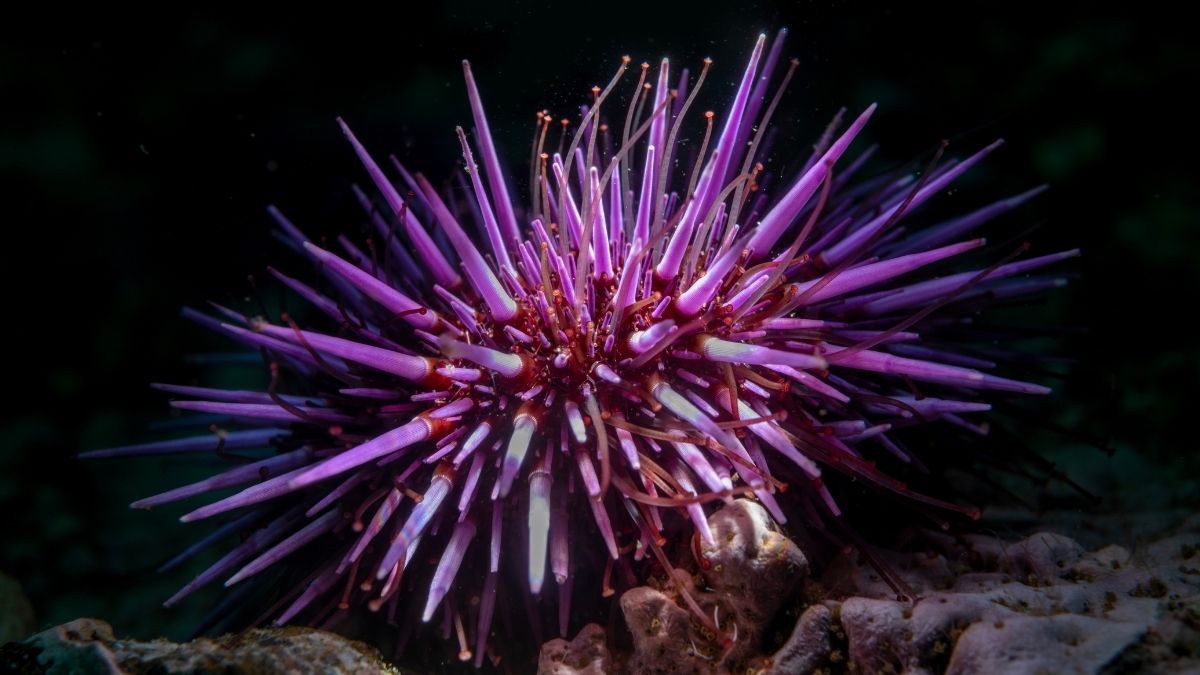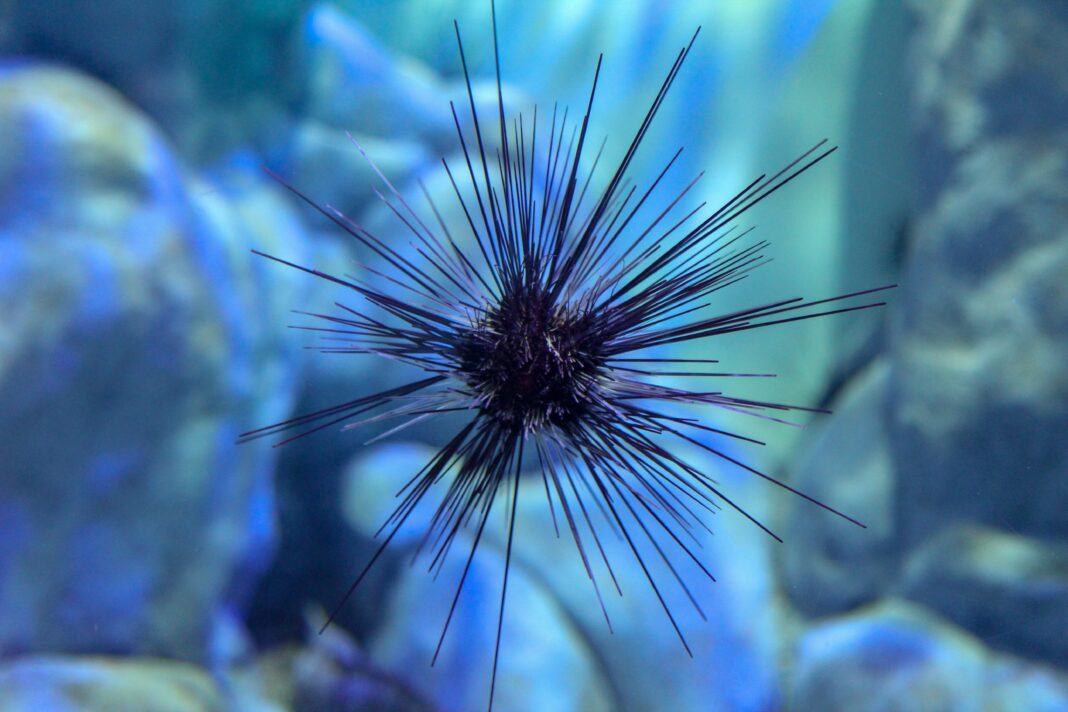Imagine a creature you thought simple and spiky rocks roll in the shallow pool, or a fancy treat on your shushi plate. But new research has turned the idea that these prickly creatures are actually incredibly complex, possessing a brain everywhere. This stunning reality has revealed new research about sea urchins. It has made scientist question their brain and how they work. Sea urchins are more complex than we ever guessed, so do not let their looks fool you.
Purple sea urchins (Paracentrotus lividus) begin life as tiny, swimming larvae. They undergo an incredible metamorphosis after maturity, transforming into the spiny, round creatures that we are more familiar with. Something remarkable happens in their bodies during this transformation from larvae to the adult stage.
A Surprising Transformation of Sea Urchins
Sea urchins get a whole new body as they grow up. They undergo a radical change and become the spiny urchins. This transformation process is called metamorphosis.
It is like they are rebuilding their entire body during metamorphosis. They start as tiny, wiggling larvae that are bilaterally symmetrical, like us, with left-right symmetry. But when they become adult, they completely transform into a round, spiky creature with radial symmetry like a five-pointed star.
Surprisingly, this transformation is not only about a change in body shape. As a team of scientists, led by Periklis Paganos, discovered something amazing during this transformation. The urchins do not just add a few new nerves as they grow. They completely rebuild their nervous system from scratch and turn their whole body into a giant, spread-out brain.

A Body Full Of Brain Cells
Scientists were amazed to find that over half of a young sea urchin’s cell types are nerve cells. Even more surprising, all these nerve cells are not the same; some use dopamine, others serotonin, GABA, glutamate, histamine, and even neuropeptides, the same chemical messengers that human brains rely on for communication.
The sea urchin is not just adding more nerve cells. It is rebuilding its entire nervous system from the ground up by using the same set of genetic instructions. It is an amazing example of nature completely redesigning a living, functioning brain that’s spread throughout a body.
Unlike many animals, sea urchins do not have a traditional “trunk” region in their bodies. In most creatures, specific genes define distinct front (head) and back (trunk) regions, but in sea urchins, the genes that typically build the trunk are active only in internal organs such as the gut, not in the outer body. Instead, their entire outer body expresses “head”-like gene programs, making their whole form essentially head-like.
It means that rather than a loose nerve network, sea urchins possess a complex, integrated nervous system that researchers call an “all-body brain,” with the neurons spread throughout their entire body working together as a whole.
Sea Urchins: The Science Behind the All-Body Brain
This revolutionary insight was made possible by advanced genetic and cellular analyses. It revealed a surprisingly complex nervous system extended throughout the sea urchin’s body. Unlike animals with a centralized brain, where processing is concentrated in one location, the sea urchin has a decentralized system, a complex and interconnected neural network spread throughout its body.
This network functions collectively as an expansive “all-body brain,” and is capable of processing information across its entire form. In short, Sea urchins possess a sophisticated, body-wide brain, built with a genetic blueprint similar to our own, challenging the long-held belief that complex intelligence requires a central brain.
This discovery challenges long-standing assumptions about the simplicity of echinoderm nervous systems. The findings suggest that the “brain” is not confined to a single structure but is instead distributed throughout the organism, with genetic patterns and cell types remarkably similar to those found in vertebrates.
References:
- Paganos, P., Ullrich-Lüter, J., Almazán, A., Voronov, D., Carl, J., Zakrzewski, A.-C., Zemann, B., Rusciano, M.L., Sancerni, T., Schauer, S., Akar, O., Caccavale, F., Cocurullo, M., Benvenuto, G., Croce, J.C., Lüter, C., Arnone, M.I. (2025). Single Nucleus Profiling Highlights the All-Brain Echinoderm Nervous System. Science Advances. DOI: 10.1126/sciadv.adx7753
- Periklis Paganos et al. Single-nucleus profiling highlights the all-brain echinoderm nervous system. Sci. Adv. 11,eadx7753(2025).DOI:10.1126/sciadv.adx7753
- Researchers discover an “all-body brain” in sea urchins. (2025, November 4). Museum für Naturkunde Berlin. https://www.museumfuernaturkunde.berlin/en/museum/media/press/researchers-discover-all-body-brain-sea-urchins
- Shock Discovery Reveals Sea Urchins Are Basically ‘All Brain’. (2025, November 15). ScienceAlert. https://www.sciencealert.com/shock-discovery-reveals-sea-urchins-are-basically-all-brain
More from the author: Sudden Goodbyes: The Alarming Truth About Cardiac Arrest’s Hidden Dangers

Lubna Rasheed is currently pursuing a bachelor’s in Biochemistry from the University of Veterinary and Animal Sciences, Lahore. She has a keen interest in science communication, making science understandable to the general audience.

